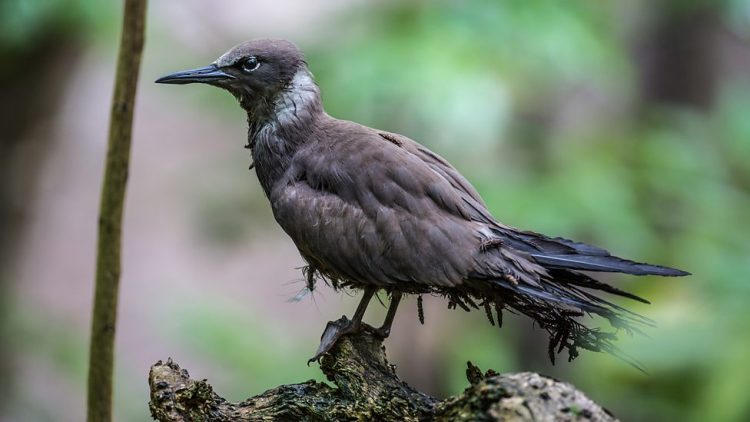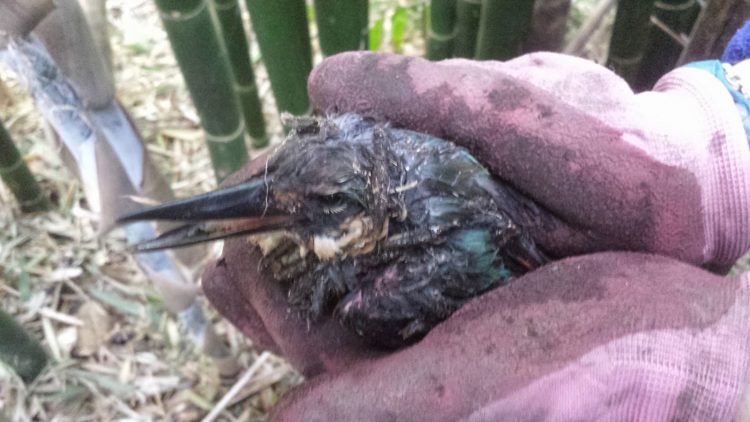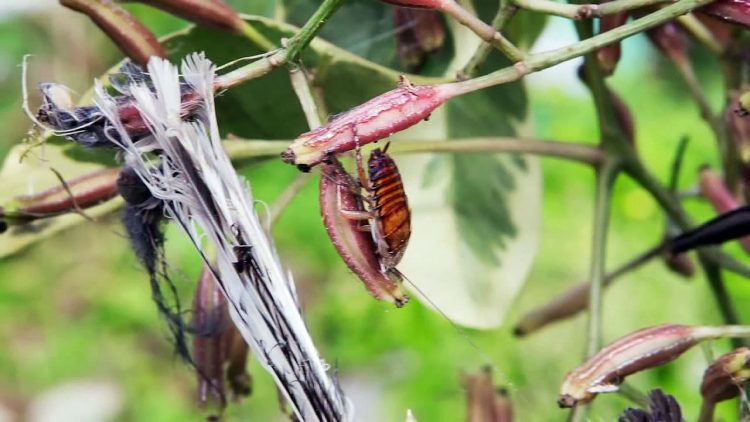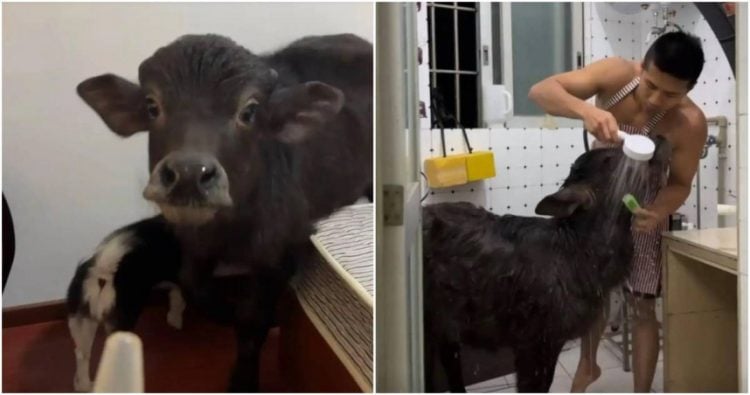Pisonia Brunoniana is a species of small flowering trees native to tropical regions from Hawaii to New Zealand, and as far west as India. The pisonia tree has soft brittle wood with large glossy leaves and a dark secret. If you search among its roots and branches, you’re likely to find thousands of delicate bones and tiny mummified corpses. It is this macabre feature that gives the tree its creepy nickname – “the birdcatcher tree”.
The pisonia tree produces long seed pods coated with a thick sticky mucus that entraps insects and the birds tempted to feast on them. The ensnared insects look like easy pickings to unsuspecting birds, but if they’re not careful, they can easily get entangled in the sticky seedpods themselves. Too many seeds caught among their feathers can weigh the birds down and prevent them from flying off the tree. If they’re not picked off by a passing scavenger, the birds are doomed to a slow death by starvation. Often, the birds die without ever escaping the pisonia’s branches, which means their withered corpses are left dangling like some strange fruit or a creepy Christmas ornament. In what can only be described as a vicious cycle, birds of prey tempted by the trapped birds sometimes also get entangled in sticky seeds and become trapped themselves.

Photo: BBC
When Alan Burger, an ecologist at the University of Victoria, heard about the bird-killing reputation of the pisonia tree, he wondered if there was a reason behind the trapping mechanism, or if it was merely an evolutionary quirk. It is not unusual, after all, for plants to entangle or immobilize hapless animals as a means of fertiliser or seed dispersal, but seed distribution seemed an unlikely motive when the winged couriers die so near the tree. In May 1999 Burger traveled to the archipelago of Seychelles in the Indian Ocean to undertake a 10-month study of the strange tree.
“The results from my experiments showed quite convincingly that the Pisonia derived no obvious benefit from fatally entangling birds,” Burger said. The seeds did not gain any enhanced germination rates, or seedling survival, by sprouting beside the dead birds. Further experiments proved trees gained significantly more nutrients from guano (bird poop) than bird corpses, indicating that birds were more valuable to the tree alive than dead.

Photo: The Garden Tamer’s Diary
Then why the sticky seeds? Burger immersed the seeds in seawater to test whether the tree utilised the corpses as rafts, dispersing themselves from island to island. However, the seed pods died within five days of immersion, disproving the theory. Next, he tried intermittently dipping the seeds in water over several weeks and found that they survived. So if the bird only dived occasionally to catch fish, the seeds remained viable and would sprout new pisonia trees wherever they wound up.
“Having the birds alive seems to be the key to dispersal, but an unfortunate consequence of having extremely sticky seeds, and producing many seeds in a cluster, is that some birds get fatally entangled,” Burger says. Killing birds is merely unfortunate collateral damage, and as long as at least some of them survive to disperse the seeds, the pisonia will continue to produce them.

Photo: video screengrab
Perhaps the strangest part of the story is that despite the dangers, seabirds love the pisonia tree. Beth Flint, a wildlife biologist for the U.S. Fish and Wildlife Service, says “It’s rare to see a Pisonia tree that doesn’t have seabirds in it. At least in places where there are seabirds left.”
In some places, humans are intervening on the bird’s behalf. On the North Island of New Zealand, the tree has almost gone extinct as a result of extensive cutting to prevent songbirds from becoming entangled, and on the island of Cousine, conservation officers have a policy of catching and cleaning entangled birds to ensure their survival.






